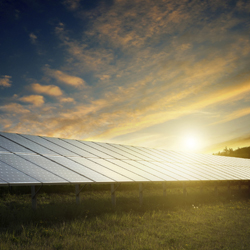High-efficiency crystalline solar cells
Widespread market uptake requires a substantial decrease in cost and/or increase in efficiency (which translates to a decrease in cost). Current crystalline-silicon solar cells have thicknesses around 180 micrometres. EU-funded scientists working on the project ‘20 percent efficiency on less than 100 µm thick industrially feasible c-Si solar cells’ (20PLµS)(opens in new window) are reducing that thickness to reduce silicon usage for substantial cost savings. The trick is maintaining high solar - to - electricity conversion efficiency and a yield comparable to production lines for conventional silicon wafer solar cells. The consortium has targeted an efficiency of around 20 % with significant reduction in silicon content thanks to improved light-trapping technologies. In addition, they focused on mechanical issues to overcome breakage of the thinner wafers that can impact on yield. Scientists successfully developed the process to produce the thinner silicon wafers and implemented it in an industrial pilot production line at one of the project partners’ facilities. The cells demonstrated a median efficiency of 20 with the best cell converting sunlight to electricity at 20.3 %. In addition, thanks to adjustments in processing and handling procedures, the wafer breakage rate is only 4.5 %. Despite technical advances, broad market uptake also depends on cost and sustainability. Scientists determined that all technical improvements in materials and processing associated with the pilot production line will reduce the cost associated with photovoltaic energy production. Life cycle analysis demonstrated lower environmental impact and shorter energy payback times in the new system. This system is thus more environmentally friendly than the reference industrial technology. The project held an industry-oriented workshop on progress to date including presentations by invited speakers and full-scale production capability is currently present at partner facilities. The consortium is now ready to respond to enhanced market demand of its superior photovoltaic technology.



